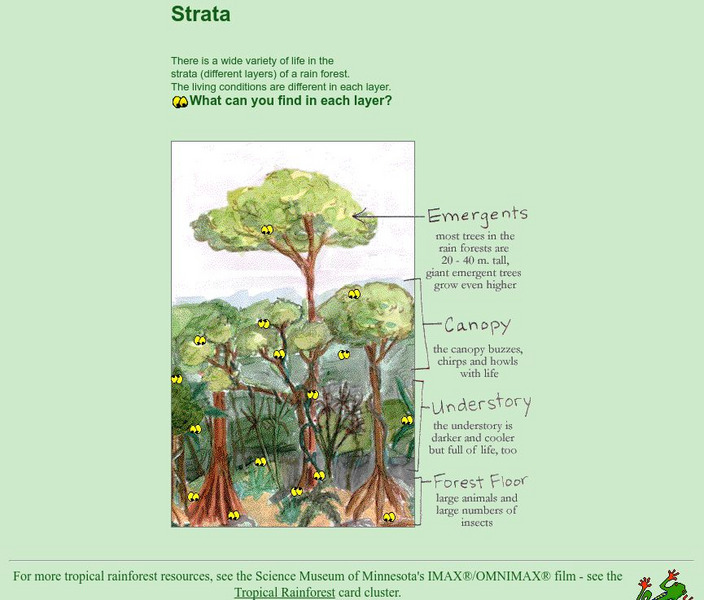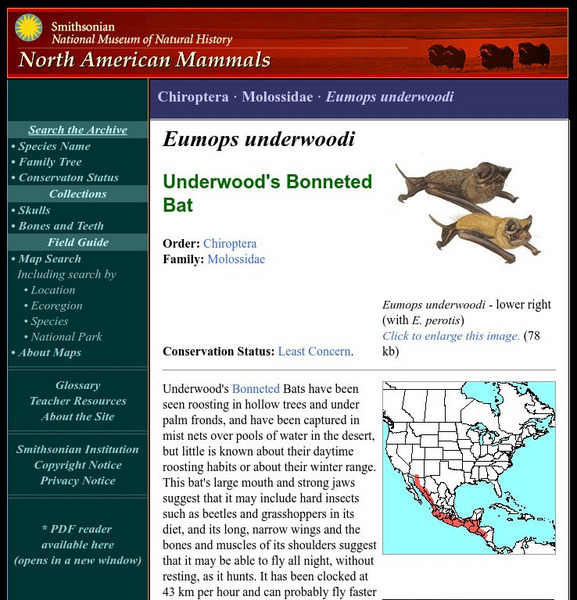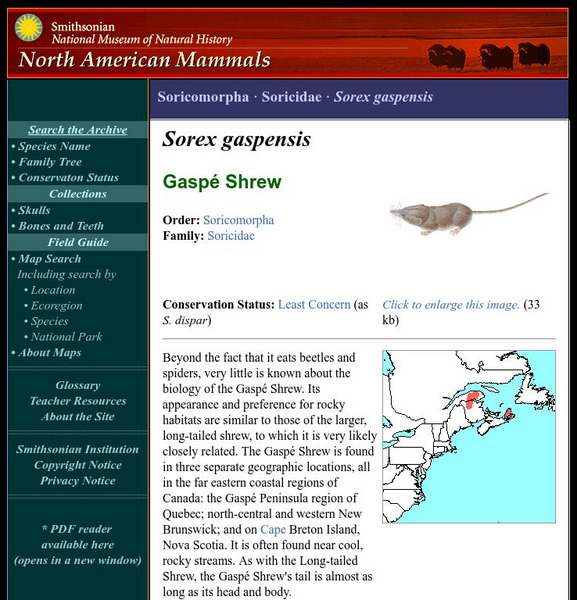Other
Insectclopedia: Lesson Plans
A very comprehensive site from pedagonet.com that includes lesson plans on insects for all ages and grade levels. Students will enjoy learning about insects as you employ these engaging lesson plans in your own classroom.
Wonderville Media
Wonderville: The Beatles
They were not always called the Beatles. The first name of the band was Johnny and the Moondogs. After that, they changed their name to the Silver Beetles. They soon changed their name again to a shorter version, simply the Beatles. This...
Environmental Education for Kids
Eek!: Insects
Discover everything you can about various species of insects including the cicada, the diving beetle and the mosquito.
Iowa State University
Iowa State University: Entomology Image Gallery
This site provides an extensive collection of photographs of insects.
Other
Insects.org: Insects on the Web
Explore the fascinating stories of insects and the roles they play in our lives. Check out the photos and descriptions, learn how they help humans, find some great educational resources, and much more.
CK-12 Foundation
Ck 12: Biology: Insects
[Free Registration/Login may be required to access all resource tools.] Discusses characteristics of insects.
University of Michigan
University of Michigan Critter Catalog: Insects
A thorough site that provides a description of the characteristics of insects and then focuses on the insects of southeastern Michigan. Pictures, classification groupings, and sound clips of insects are included.
Other
California Science Center: Ladybug Glider [Pdf]
Color and cut out the body and wings and put together the ladybug and watch it glide! A little bit of information about ladybugs and insects is provided.
Enchanted Learning
Enchanted Learning: Insect Crafts
An extensive list of elementary insect crafts. Each activity contains a list of everyday materials, and detailed instructions.
Science Museum of Minnesota
Science Museum of Minnesota: Rainforest Strata
This site provides a picture on the layers of the rain forest with yellow eyes all over. You click on the yellow eyes and learn about an animal. You may have to search for it by going to the home page.
US Environmental Protection Agency
Epa: Endangered Species: Save Our Species Coloring Book
Use this site to create your own picture book of 21 endangered species. As you color each of the pages you can learn about each endangered animals.
Other
Evolution: The Theory of Natural Selection (Part 1)
These pages are part of a site called Evolution that accompany a textbook by the same name. Mark Ridley is the author. This section has an advanced discussion of determining allele and genotype frequencies using the Hardy-Weinberg ratio.
US Geological Survey
Usgs Kids: Mealworm Ranch
A fun, hands-on project that will allow your students see first-hand how metamorphosis works. Students observe mealworms develop and change right before their eyes.
Discovering Egypt
Mark Millmore's Ancient Egypt
This site provides a captivating tour through Egypt's past. Visit the ancient temples, the kings and queens of the past. Learn about the hieroglyphic form of communication. Additional links for extended information temples and hieroglyphs.
Curated OER
Blister Beetle
This colorful site not only provides images of some common insects, but includes information on the foods which they eat as well as the habitats where they can be found.
University of Oxford (UK)
Oxford University Museum of Natural History: Insects
Flies, fleas, beetles and bees are all insects, and the study of insects is called entomology. Insects are probably the most important group of animals on earth - there may be as many as ten million different types of insect alive today!...
University of Arizona
University of Arizona: Ladybug
This competent site delves provides factual information related to appearance, diet, habitat, predators, interesting behavior, impact on the ecosystem, and collecting live ladybug beetles.
Smithsonian Institution
National Museum of Natural History: American Mammals: Southern Grasshopper Mouse
Southern Grasshopper Mice are also known as scorpion Mice: they are able to kill (and then eat) scorpions, by first immobilizing the venomous tail and then biting the head. They also prey on beetles that secrete defensive chemicals from...
Smithsonian Institution
National Museum of Natural History: American Mammals: Underwood's Mastiff Bat
Underwood's mastiff bats have been seen roosting in hollow trees and under palm fronds, and have been captured in mist nets over pools of water in the desert, but little is known about their daytime roosting habits or about their winter...
Smithsonian Institution
National Museum of Natural History: American Mammals: Gaspae' Shrew
Beyond the fact that it eats beetles and spiders, very little is known about the biology of the Gaspe Shrew. Its appearance and preference for rocky habitats are similar to those of the larger, long-tailed shrew, to which it is very...
Smithsonian Institution
National Museum of Natural History: American Mammals: Evening Bat
Evening bats that roost together seem to share information about the location of rich foraging patches and alternative roosting sites. When they forage on farms, they are a boon to farmers, because the bats eat cucumber beetles (the...
Smithsonian Institution
National Museum of Natural History: American Mammals: Pallid Bat
Common throughout its range, the pallid bat occurs in arid and semi-arid regions throughout northern Mexico and the western United States. Pallid bats eat beetles, grasshoppers, and moths, and they forage for slow-moving prey, such as...
Other
History in Motion: Boll Weevil Blues
This scenario shows the spread of the weevil and a few of the songs that singers such as Charley Patton, Ma Rainey, Bessie Smith, and others created in the wake of its devastation. Click on the events to see the details of the...
A-Z Animals
A Z Animals: Animal Facts: Ladybird (Coccinellidae)
Presents an overview of Ladybirds, including their habitat, appearance, behavior, breeding, and predatory lifestyle. Images of this species and statistics can also be found here.
Other popular searches
- Beetles Lightly Toasted
- Beetles and Angles
- Of Beetles and Angels
- Insect Beetles
- Scarab Beetles
- Leaf Feeding Beetles
- Pine Beetles
- Bombardier Beetles
- Beetles Lesson Plans
- Flour Beetles
- The Beetles
- Beetles and Angels

















